Tìm Sách
Sách tiếng Anh-English >> The History And Paleography Of Mauryan Brahmi Script
Thông tin tra cứu
- Tên sách : The History And Paleography Of Mauryan Brahmi Script
- Tác giả : C.S. Upasak
- Dịch giả :
- Ngôn ngữ : Anh
- Số trang : 327
- Nhà xuất bản : Nava Nálanda Mah.Avlhára, Nalanda (Patna)
- Năm xuất bản : 1960
- Phân loại : Sách tiếng Anh-English
- MCB : 12100000002762
- OPAC :
- Tóm tắt :
THE HISTORY AND PALEOGRAPHY OF MAURYAN BRAHMi SCRIPT
C.S . Upasak
CHANDRIKA SINGH UPASAK,MA. PH.D . (LONDON)
REGISTRA- CUN-PROFESSOR,
NAVA NALANDA MAHAVIHARA, NALANDA, (PATNA)
1960
PUBLISHED BY
Nava Nálanda Mah.Avlhára, Nalanda (Patna)
Thesis approved for the Degree of Doctor of Philosophy at University of London, 1959.
PRINTED AT
THE TARA PRINTINGWORKS, VARANASI.
The Government of Bihar established, the Nalanda Institute of Research and Post-graduate Studies in Buddhist Learning and Pali (The NAVA N ALANDA MAHAVIHARA) at Nalanda in 1951 with the object, inter alia, to promote advanced studies and research in Buddhist Learning, and to publish works of permanent value to scholars. This Institute is one of the five others planned by this Government as a token of their homage to the tradition of learning and scholarship for which ancient Bihar w.is noted. Apart from the Nalanda Institute, four others have been established, namely Mithila Institute of Post-Graduate Studies and Research in Sanskrit Learning at Darbbanga, K. P. Jayaswal Research Institute at Patna, the Bihar Rashtra Bhasha Parishad for research and advanced studies in Hindi at Patna and the Vaisali Institute for Post-Graduate Studies in Prakrit and Jainology at Vaisali.
As part of this programme of rehabilitating and reorientating ancient learning and scholarship, this is the research publication Volume III, which is the thesis of Dr. C. S. Upasak, Registrar-cum-Professor of the Institute, approved for the degree of Ph. D. of London University. The Government of Bihar hope to continue to sponsor such projects and trust that this humble service to the world of scholarship and learning would bear fruit in the fulness of time.
DIRECTOR’S NOTE
We have pleasure to publish this Research Volume 111 from Nava Nalanda Mahavihara, which embodies the doctoral thesis of Dr. C. S. Upasak, Registrarcum-Professor of the Institute, that was approved by the London University for the Ph. D. degree in 1959. Dr. Upasak has contested some old theories and propounded his own. He has worked on Brahmi Script of Mauryan period, and his researches fill a gap of half a century. It is for the scholars and experts to express their appreciation of the work.
S. Mookerjee, m. a. ph.d., Director, Nava Nalanda Mahavihara, Nalanda {Patna).
FOREWORD
The earliest intelligible written records of India are the great series of inscriptions issued by the Emperor Asoka and engraved on rocks and pillars throughout his empire. It is now well over one hundred years since these records were first deciphered and studied and the principles of the Asokan Brahml script, from which all later scripts of Hindu India developed, are now quite clear. Since Prinsep first read the edicts of Asoka many studies of Indian palaeography have appeared, tracing the development of the scripts of India from the time of Asoka to the present day. Many new inscriptions have been discovered and are still being discovered, and from day to day our knowledge of Indian palaeography becomes more precise.
Hitherto, however, no really complete and exhaustive analysis has been made of the palaeography of the Indian inscriptions of a single short period. My friend Dr. C. S. Upasak, by a careful study of every letter of all the surviving inscriptions of the Mauryan period has removed many older misconceptions, produced several new hypotheses, and thrown fresh light on such knotty problems as the origin of the Brahmi script. It is much to be hoped that he and other students will do the same for later periods and various regions of India, for only thus may we arrive at a really definitive survey of the whole subject of Indian palaeography. By his minute study of the Asokan script, and by his original approach to the problems connected with it, Dr. Upasak has earned the thanks of all those who are interested in unravelling India’s ancient past. Owing to its specialized character, his work will have few readers, but it is nevertheless one of the most important and original contributions to the study of Indology to have been made in recent years, and its author has set new standards in the analytical study of Indian palaeography.
A L. Basham
Professor of the History of South Atia:
Nalanila, 20 January, 1960. University of London,
PREFACE
The Palaeography of Brahmi is vast and varied. Not only- does its use cover a long period of several centuries but also, as being the parent of all the scripts of the Indian sub-continent and many of the south-east Asian countries, it has spread over a very extensive area. The present work is confined to the treatment of the Mauryan Brahmi script. In other words, it deals with the earliest form of the Brahmi writing. As a prologue to a fuller study of the script, it is appropriate to tell something about its origin. I have therefore discussed this problem, but only very briefly, since otherwise it would have become a full- length work in itself. And as an epilogue, I have reviewed and presented the palaeographical peculiarities of all those inscriptions of uncertain date which are rightly or wrongly believed by some to be the records of the pre-Asokan or Asokan period.
While discussing the individual letters of Asokan Brahmi,
I have done my best to reproduce all the shapes of a letter as found in their facsimiles. But to get a first hand impression, it is useful to consult the facsimiles or to inspect the inscriptions personally. An exhaustive list of all these signs has been compiled and given in the form of Appendices, which should be consulted in conjunction with the individual description of the letter concerned. To reproduce these shapes and to point out their exact position in an edict, I have followed Hultzsch in the Corpus Inscriptionum lndicirum, Vol. I, except for a few unpublished inscriptions and those published elsewhere. For the Minor Rock Edict Erragudi, I have consulted Dr. D. C. Sircar's Select Inscriptions. For the facsimiles of the unpublished inscriptions, I am indebted to Dr. D. C. Sircar, the Government Epigraphist of India, who very kindly forwarded the full set of the photographs of these inscriptions and allowed me their use. The Rock Edicts of Erragudi are in a damaged and blurred state and so, it was not possible to compile an exhaustive list ofthe shapes of each letter from them. Nevertheless, I have endeavoured to include them as far as they are traceable.
The present work substantively constitutes my doctoral thesis approved at the University of London in 1959, and which is now being published through the Nava Nalanda Mahavihara (Nalanda Institute of Post-graduate and Research in Pali and Buddhist Studies), Nalanda, (Patna). I am indeed very grateful to the Director and other authorities of the Institute. In the course of my research I have been assisted by various scholars -and friends, and I wish to express my thanks to them. I should like, in particular to thank Dr. J. D. M. Derrett and Dr. A. H. Dani for their many valuable and bright suggestions. I am also grateful to the Venerable H. Saddhatissa, M. A., the Chief Incumbent of the London Buddhist Vihara, 10, Ovington Gardens, London, S.W. 3, for the generous help that he readily gave during my stay in London. My thanks are also due to the members of the Library-staff of the School of Oriental and African Studies, London for their excellent help in providing all the materials that I needed. Finally, I should like to express my deepest gratitude to Professor A. L. Basham for his erudite guidance and sympathetic help throughout the period of the preparation of this work, and who has been so kind to write a foreword to the work when he visited Nalanda. I also feel it my duty to thank the Printers, The Tara Printing Works, Varanasi, who did their best to bring out the book as nicely as possible.
C. S. Upasak
CONTENTS
Foreword
Preface
Abbreviations :
Chapter-I— Introduction :
Chapter-II— Origin and decipherment of Brâhmï script
Chapter-III— Asokan Brâhmï Script :
Chapter-IV— The Asokan Brâhmï alphabet and system of writing :
Chapter-V— The Mauryan Inscriptions :
Chapter-VI— Other inscriptions attributed to the Mauryan period :
Chapter-VII- - Conclusion :
Appendices :
Standard shape of Asokan Brâhmï :
Line-Chart of the Minor Rock Edict of Erragudi
Bibliography ï
Index
 Facebook
Facebook
 Google
Google
 Google+
Google+
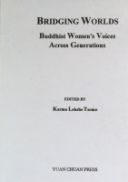


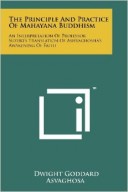
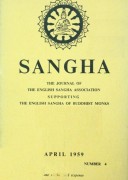
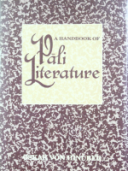
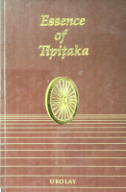
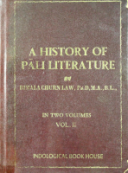


_thumb.jpg)






